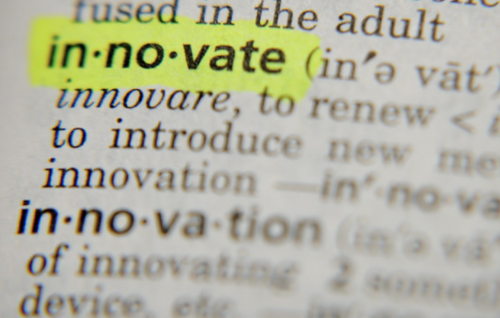
As I speak with educators regarding innovation in classrooms for the benefit of students, I often hear the phrase, “Yeah, but…” Educators work within systems which contain policies and constraints. It is vital that we remain grounded, aware of the realities surrounding our work. At the same time, our students live in the world of today. We have a moral imperative to empower students to adapt and thrive in a digitally connected, media infused environment.
In their book “Innovate Inside the Box: Empowering Learners Through UDL and the Innovator’s Mindset“, authors George Couros and Katie Novak provide practical tips for empowering students to be innovators within an educational setting (“the box”). The book includes real and authentic stories from George, Katie, and other educators. It is honest, inspiring, and focuses on relationships as core.
Accessible to ALL

“Innovate Inside the Box: Empowering Learners Through UDL and the Innovator’s Mindset” is accessible. It celebrates the variability of students and the adults who serve them. A quote from the book particularly resonates with me, “The best educators find a balance between using what they know, remixing what they know, or creating something entirely different, to serve the students in front of them.” The last thing a professional educator wants is a book that asks them to abandon their knowledge and all current practices, to innovate without looking back. The aforementioned quote honors educators. It does not ask them to start from scratch. This parallels a strategy I use in coaching. There is not a one-size fits all approach. Innovation is personalized, it builds upon the strengths of an educator. It is much easier to build upon prior knowledge when remixing and creating, than to develop from the ground up.
Strengths-Based Approach

Strengths-based learning extends to students as well. “Innovate Inside the Box” aligns the 8 characteristics to Universal Design for Learning (UDL). Katie Novak provides practical examples to guide educators in designing innovative learning experiences that meet students’ varying needs. The examples validate student voice and choice by providing for multiple means of engagement, representation, action and expression. Students access and demonstrate learning according to individual strengths. Educators focus not on data, but on evidence of learning. It is a strengths-based approach that acknowledges the constraints of educational systems and offers methods of innovating within those parameters. Even better, UDL is backed by a foundation of neuroscience. It’s strategies activate particular networks of the brain to promote learning.
Inside the Box
Katie and George acknowledge and address the “Yeah, but…” phrases in education. The system that educators work within often boxes them in with curriculum, standardized tests, time constraints, and lack of training. Each of these topics is addressed in the book. While the book indicates, “Too often the grade is the goal for our students, and we lose sight of learning in
pursuit of a number. School needs to be something bigger than a grade,” educators are urged to delay the grade so that students view feedback and iterate upon their work. This focuses on learning as a process rather than as a product. Practical ideas such as this permeate the book.
Each and every one of our students deserves our best. In order to prepare students to be expert learners, to become the leaders of today, educators must innovate and iterate. The “yeah, but…” phrases echo a reality of the challenges we face in affecting change. We can address these challenges as we learn ways to embody the innovator’s mindset 8 characteristics and leverage UDL in classrooms. Click here for more information about “Innovate Inside the Box: Empowering Learners Through UDL and the Innovator’s Mindset“.
